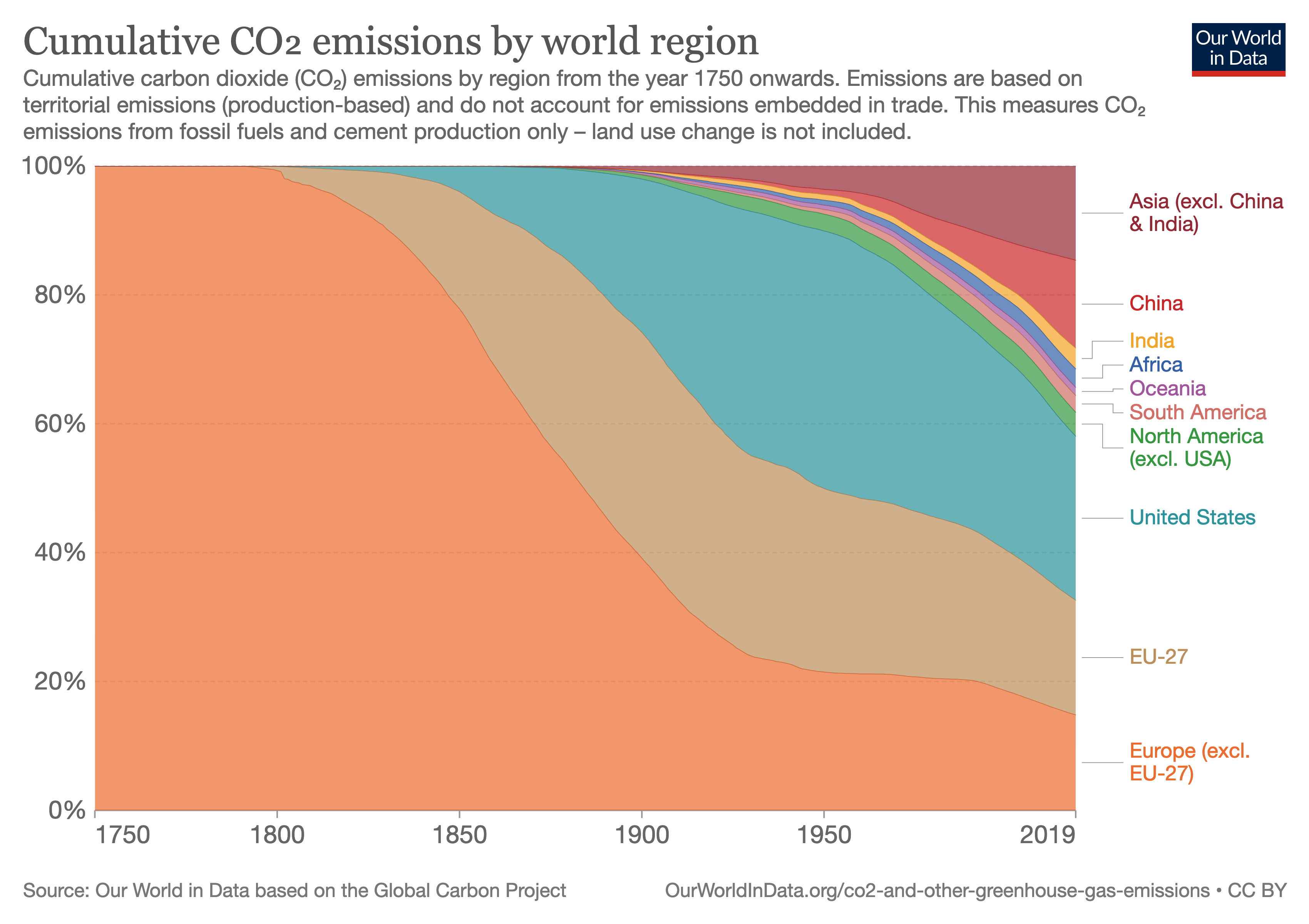Section 1.8 Solving for Change
How can the mathematics we've learned help us to understand the issue of greenhouse gas emissions better? And how can it help us find solutions and areas to focus our energy?
We're going to use our mathematics knowledge to try to answer three questions: Who is responsible for greenhouse gas emissions, what are the strategies for reducing emissions, and what are the most effective ways for us to combat climate change?
Subsection 1.8.1 Who is responsible for greenhouse gas emissions?
The question of responsibility for greenhouse gas emissions has emerged as a major one in recent years. The Kyoto Protocol, a 1997 treaty, and the Paris Climate Accords, in 2016, sought to set targets for individual nations to reduce their greenhouse gas emissions. These treaties approached climate change from the perspective of shared responsibility, in a historical sense. Figure
